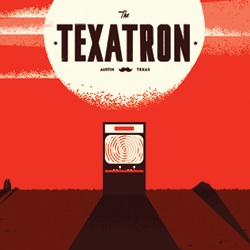RAGDOLL METAPHYSICS: A LOVE LETTER TO THE GOOD OLD FASHIONED JET PACK
Jet packs, for reasons of physics and safety, have never really been for this world, despite some heroic efforts by engineers and enthusiasts across the years. Instead, they have found their finest application in the virtual thrills and fancies of videogames.
Having been beguiled by the chrome-washed battle-future of Section 8 this weekend – the game is chock-full of jet-jumping combatants – I turned my easily-distracted mind to contemplating the gaming legacy of the jet pack. I wondered where history’s finest jet packs had flown, and where the most personal of flying machines might go next. So onwards, and to a brief history of the gamer’s “rocket-belt”. (Not exhaustive, obviously, but let’s see if we can hit some of the high notes…)
Probably the first game to feature personal human flight was 1983’s Jetpac on the BBC and ZX Spectrum (soon followed by Lunar JetMan, the inevitable sequel). Of course there had been plenty of jet propulsion games before this – just look at Asteroids – but this very specifically portrayed the jet pack that I’m aware of.
The game was something like a platform shooter, and it was one of the first games by Tim and Chris Stamper, the now-legendary developers who went on to form Rare, and design GoldenEye and Perfect Dark. In 2007 they revamped JetPac for XBLA, but that seems trivial when we see the original glorious masterwork in motion above — JetPac caught the notion just right, and set it up as part of a simple combat game, somewhere between Chuckie Egg and Defender.
But, sadly for the ‘pack, the Stampers didn’t run with that rocket-powered baton for very long (although I think there was a jet pack in one of the Perfect Dark games) and other games performed a thrust-assisted leap into the breach. The 8-bit era was filled with jet packs, in games such as Rocket Rangers, Xenophobe, Space Harrier, and many others. But it’s arguable that the next true high point for the jet pack game was Exile in 1988 (below).
This was a game in which the jet pack became integral to a theme that few games had seen fit to examine previously: exploration. While in classical side-scrollers and shooters there wasn’t a whole lot of scope for poking around, and the jet pack was little more than a fun extra manner of motion, the jet pack adventures of Exile meant finding out what was there. Here, suddenly, the jet pack had more value: it was a tool on which the experience hinged.
What was even more fascinating about Exile, from an evolutionary game development point of view, is that it simulated “real” physics within the 2D world. Your jet-pack piloting was, for the first time in a game, effecting by more than just your own inertia. It remains one of those memories of gaming that, whenever I see a 2D game pushed into the 3D era, makes me wonder who will take that step for Exile.
Indeed, no matter how impressive a work Exile was, it could never been as much of a change as the transition into the 3D era, which brought with it an entirely scope of use and implementation for the humble jet pack. This change was was neatly defined by Nintendo’s Pilot Wings in 1990 (above). Rotation! Z-axis! Yes, the jetpack would never be the same again, except when it was, in stuff like the Worms games.
Then again, it didn’t have to stick to either of those paradigms to be an essential and exciting piece of game kit: 1993’s X-Com: UFO Defence had jet packs in too, and was all isometric, and turn-based. In fact, it wasn’t until the mid to late 90s that jet pack really began to, er, take off in 3D, with games such as Dark Forces in 1995 and then Terra Nova and Duke Nukem in 1996.
In game design terms, Terra Nova (above) was one of the pinnacles of jet pack achievement, if not the pinnacle. It consisted in a series of missions that took place over a huge, open-world environment, with the jetpack movement being essential to success in both travel and combat. It had a radical 3D engine that made the distances drop in detail rather than fog, which imbued the jet pack travel with an unprecedented verisimilitude (unless you count the voxel Comanche games, I guess?)
It also got the loping, jumping physics of jet pack travel spot on. All this combined to make an extraordinary game which – like Exile – is absolutely ideal for a modern remakes. That’s unlikely to happen, however, because for reasons that aren’t clear – although folks cite ambitious system specs at the time – the game was a commercial disaster, and was never revisited. It was, we might argue, one of the great dead-ends in modern game design.
The seminal jet pack year for me personally was 1998, in which I first played Microsoft’s Outwars, a 3D, third-person shooter in which you were permanently equipped with a limited use jet pack, and then later, Starsiege: Tribes (above). Outwars was probably a bit rubbish, but I always look back on it with fondness because the jet pack conceit was central to how the entire game unfolded, eventually allowing for full flight as you took on the final boss enemy.
Tribes, meanwhile, created a canon for jet packs in multiplayer gaming that continues to this very day in games like Section 8 and Instant Action‘s Fallen Empire: Legions. The Tribes physics were never quite right – I think everyone admits that – but it nevertheless created a joyously smooth and inertia-driven motion that led to unique swooping, leaping semi-aerial combat.
Tribes – returning most recently with Irrational’s rather good Tribes Vengeance – has united the jet pack with multiplayer FPS gaming. It’s often hard to separate them. But that’s not to say that jet packs have emigrated entirely to multiplayer worlds, because they have remained a solid motif for single player titles for most of this decade, too.
Both of Planet Moon’s Giants and Armed & Dangerous (above) featured personal rocketry, as does, obviously, Flashbang’s Jetpack Brontosaurus (who graces this post’s opener) while some rather unlikely genres have made good use of it – Grand Theft Auto: San Andreas provides you with a jet pack which can be stolen and then re-used later in the game, while the jet-antics of the robot duellists in Armoured Core 4 proved the mech combat needn’t only be stompy. Indeed, with jet packs it becomes rather more like hyper-violent ballet, on roller-skates.
So it seems that the past, present and future of games will not waver from the jet pack. Next year Capcom will be releasing impressive-looking single player adventure Dark Void (below), a game based entirely on the adventures of a rocketeer. That will combine jet packs with the current vogue of cover-use in action games. And it’s looking pretty impressive. Meanwhile at the end of this month we get to play Section 8, which picks up the gauntlet that Tribes threw down so many years ago.
Perhaps, as game designers learn to make larger, more open worlds, the promise of the jet pack will begin to be realised: we will explore strange new worlds where the sky is not the limit, and where the vertical axis is as just as essential as the horizons that lay all around us. Castles in the sky, here we come.
[Jim Rossignol is an editor at RockPaperShotgun.com and the author of This Gaming Life, an account of the life of modern videogames and some of the people who play them. Ragdoll Metaphysics is his Offworld column exploring and analyzing gaming’s vast world of esoterica.]
See more posts about: Offworld Originals, Ragdoll Metaphysics






